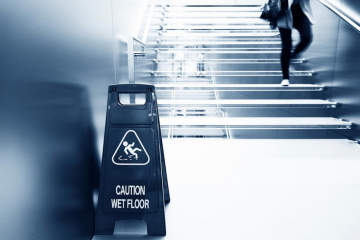Ergonomics is important in office environments. While most people understand the risks in manufacturing or other industrial settings, they sometimes overlook their office workers.
According to the Bureau of Labor Statistics (BLS), there were almost 400,000 musculoskeletal disorders (MSDs) reported in 2011. This accounted for 33% of all worker injury and illness cases that year. MSDs are ergonomic-related injuries and disorders that affect muscles, nerves, tendons, ligaments, joints, cartilage, and spinal discs. Most common are tendonitis, carpal tunnel syndrome, and back strains. They are the leading cause of occupational-related injuries, according to the National Academy of Sciences/National Research Council, and can lead to unhappy employees and lower productivity.
So how can you manage your ergonomic risks and create a healthier environment for your employees?
Starting a Successful Program
The first step is to recognize that ergonomics is important in office environments. While most people understand the risks in manufacturing or other industrial settings, they sometimes overlook their office workers. Office workers are at risk for MSDs from static postures, unnatural body positions, repetitive motions, and overall inactivity throughout the day. These factors are known to affect productivity, overall job satisfaction, and retention, and can result in higher insurance costs and possibly Workers’ Compensation costs.
Basic Elements of an Ergonomics Program
An effective office ergonomics program focuses on providing the right equipment and the right training to all employees. This starts with assessing the workers at their workstation. This assessment process will help you define the right equipment for your workers.
Training is also a critical component to sustain your program. Studies show the positive relationship between providing the right equipment and providing training. Without training, the worker won’t know how to correct their own workstation or safeguard themselves against bad postures.
By providing workers with ergonomically correct workstations and empowering them with knowledge on proper body mechanics, employers can help prevent MSDs. The benefits of an ergonomics program include improved comfort of the worker, increased productivity, reduction in workplace injuries and associated costs, and improved moral. Having a good ergonomics program in place also helps employers meet legal requirements.
Still unsure how to start the process? Need a little help implementing those basic elements? With access to over 3,000 employees in over 100 offices and experience on six continents, Antea Group is a full-service, health and safety solution provider. Our consultants are ready to assist you in implementing ergonomic best practices, help reduce work-related injuries, manage your risks, and partner to help you create a safer workplace for your employees.
Contact us today to take the first step in creating a healthier work environment.
Want more news and insights like this?
Sign up for our monthly e-newsletter, The New Leaf. Our goal is to keep you updated, educated and even a bit entertained as it relates to all things EHS and sustainability.
Get e-Newsletter



